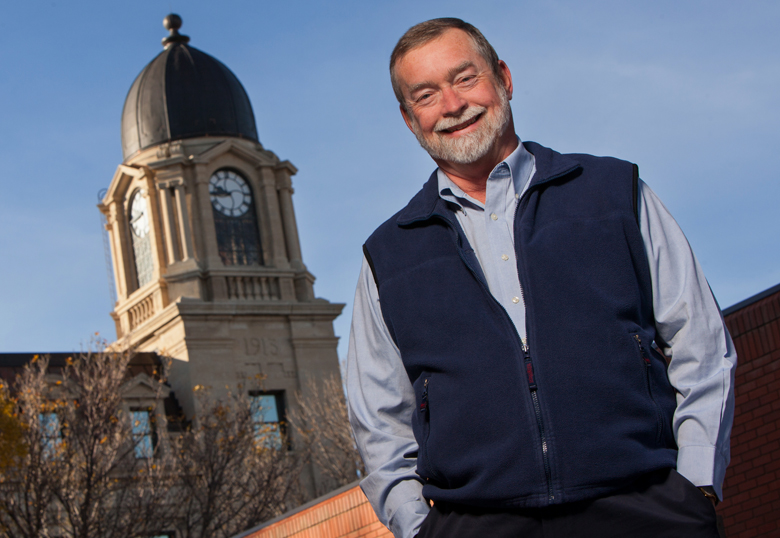The past, present and future of Lethbridge’s livestock industry, and the possible effects of current global meat consumption trends on Canada’s economy, come into sharp focus through the research of economic geographer Dr. Ian MacLachlan.
A professor in the Department of Geography at the University of Lethbridge, MacLachlan has documented the historical evolution of food animal production in Lethbridge from the 1950s onwards. He also studies today’s global geographical shifts in livestock production and consumption, analyzing the implications of rising demand for meat and other types of animal products in developing countries, and the simultaneous declining demand for these products in Canada. MacLachlan would ultimately like to better understand the economic and environmental consequences of these trends, and the potential opportunities and risks they pose for Canada’s livestock industry.

“The global food animal population is going up extremely rapidly, and that is the exact opposite of the kind of trend that we’re seeing in North America,” MacLachlan says. “It’s important to study this trend in food animal production from a human welfare perspective and from an environmental perspective.”
MacLachlan grew up a self-described “city kid” in Montreal, and completed his geography degrees at Carleton University and the University of Toronto. But in 1990, just months into the beginning of his teaching career at the U of L, he took his students on a field trip to a local meat-packing company, and the experience ignited his curiosity about the region’s cattle farming and beef production activity.
“It caused me to ask a bunch of questions about the origins of and changes to the industry, and I just got more and more fascinated. When I couldn’t find the answers in the library, I started trying to answer them myself,” he says.
The answers he came up with reveal the how’s and why’s of livestock production in Lethbridge over the last several decades, beginning with the creation of the Lethbridge Stockyards in 1950, the “kill and chill” packing plants of the 1960s, the growth of Alberta’s cattle feedlots in the late 1980s and 1990s, and the collapse of the booming cattle-finishing sector after the discovery of the fatal neurodegenerative cattle disease bovine spongiform encephalopathy (BSE) in Alberta in 2003.
These days, MacLachlan mostly focuses on better understanding the dimensions of what has become known as the “livestock revolution” – today’s unprecedented global-scale changes in the consumption of animal food products such as meat, poultry and dairy products, which is being driven largely by skyrocketing demand in countries such as China, India and Brazil. Specifically, he would like to answer the bigger questions about these trends, such as: How is consumer demand for livestock-source food connected to the observed dietary changes of consumers? What are the ecological implications of growth in different livestock species and regions? And, will increased livestock production provide income growth and development opportunities in rural regions of developing countries?
As more and more developing countries see their prospects rise, the changing dietary habits of their populations could create lucrative opportunities for Canada’s agricultural sector, he says. But he says it’s important for nations to consider the bigger picture when making policy and regulatory decisions about their livestock industries.
“When we look at the development issues in the world, providing food security for the world’s seven billion people is one of the key challenges,” MacLachlan says. “To what extent do we need to regulate some of these livestock production activities more closely in order to mitigate the environmental and animal health impacts and keep the industry sustainable? And to what extent can we work to promote and foster locally-based institutional adaptations to this change in agricultural land use?”

